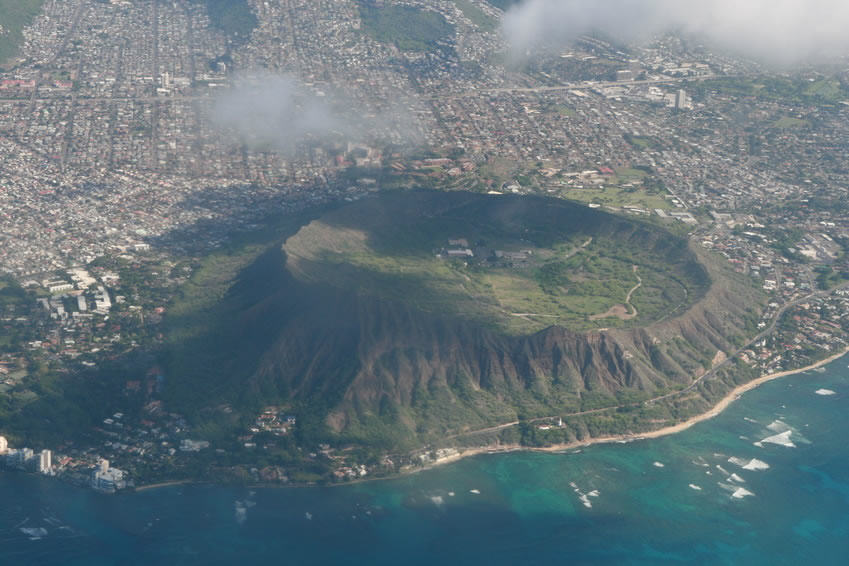Wow, what a fantastic hike I did this morning! Towering over the east side of Waikiki is the prominent mountain known as Diamond Head State Monument. I hiked to the top and it was a wonderful experience!
Reaching the summit of Diamond Head requires only a short hike that is well worth the effort. When you reach the top you are treated with spectacular views of Honolulu and the ocean off Waikiki. I could even see the location of my wonderful Honolulu Vacation Rental that I have been staying in for more than one week now and loving it so much.
The trail to the summit of Diamond Head is known as the Diamond Head Trail. It climbs about 560 feet up the mountain along a 1.5 mile route that includes some tunnels and some formidable flights of stairs.
When you reach the top you will be about 760 feet above sea level. Your jaw will drop as you gaze at a stunning panorama of that spans from the Waianae Mountains to Koko Crater all the way to the leeward coast. Directly below the viewpoint is Kapiolani Park and Waikiki.
Geologically speaking, Diamond Head is a tuff cone. It formed long after the island of Oahu had been formed.
Some other prominent tuff cones located not far from Diamond Head include Koko Head and Punchbowl. These cones are stark reminders of the volcanic origins of the Hawaiian Islands.
Hawaiians called Diamond Head Leahi which refers Hiiaka, the younger sister of the volcano goddess Pele. Hiiaka was said to have compared the brow (lae) of the ahi fish to this mountain.
Ancient Hawaiians used wooden sleds called papa holua to slide down the side of Leahi on a stone holua sledding course. Leahi was also the site of a Luakini heiau, a sacred place of worship that was also used for human sacrifices.
In 1825, British sailors mistook the calcite crystals found on the mountain for diamonds, and thus the mountain became known as Diamond Head.
Fort Ruger was built at the edge of Diamond Head’s crater in 1908. The US military began using the area extensively during World War II.
Numerous cannon emplacements were built on the rim of the crater and many tunnels were carved into the mountain. A Hawaii National Guard base is now located within Diamond Head crater.
If just seeing this one tuff cone of Diamond Head isn’t enough for you then you can cruise on over to Koko Head Regional Park to see the volcanic tuff cones of Koko Head. Within this park is the Hanauma Bay Nature Preserve as well as Sandy Beach and the nearby Halona Blowhole. The southwest side of Hanauma Bay is formed by Koko Head.
Two craters are located at Koko Head’s 642-foot summit, but this area is not open to the public (some radar facilities are located there). Within Koko Crater is a small botanical garden run by the county. The Nature Conservancy manages a preserve in the crater and provides access for volunteers.
This has been such an enjoyable journey visiting these historic sites that are also natural and geologic wonders helping me to learn about Hawaii’s past. Tonight I will be ensconced happily in my luxurious Honolulu Vacation Rental and then tomorrow I will venture forth once again to explore these beautiful islands.

